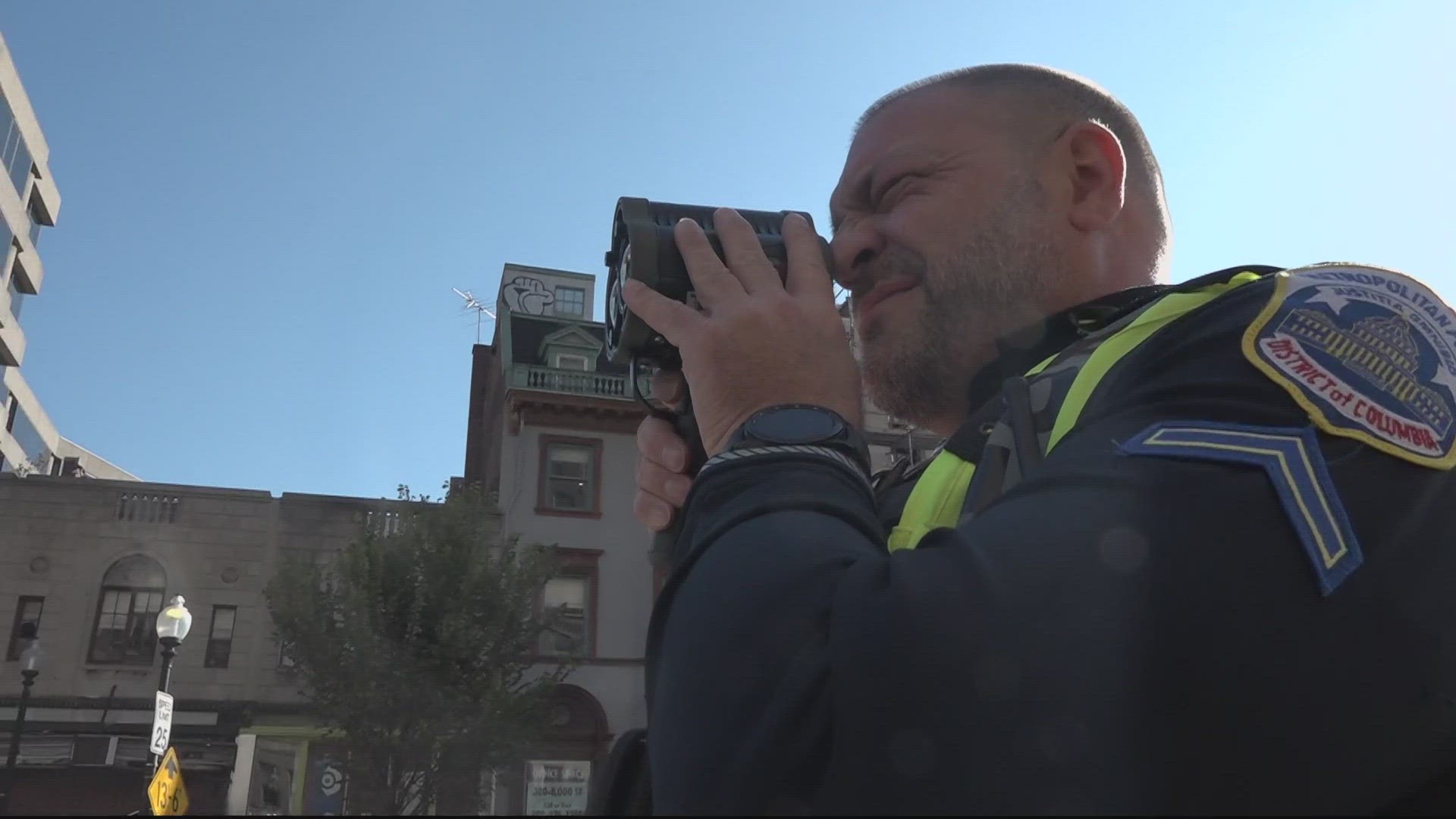WASHINGTON — Traffic deaths are on the rise in D.C., so DC Police took WUSA9 on an exclusive ride along to see how they're working to make streets safer.
Sometimes, Officer Jeremy Brady will pull out his speed radar gun and stand on the side of the road to catch speeding drivers.
All the while -- keeping his eyes on bikers and pedestrians moving unsafely.
"Hey, where's your helmet?" he called to a man passing by on a motorcycle in DuPont Circle.
Soon after, the radar made its characteristic "bleep" sound and Officer Brady gestured to an approaching car to slow down and pull over.
"The speed was 46 mph, that’s the speed he was traveling at, and the speed limit is 25," he said, printing a ticket.
In his 15 years with DC Police, Brady said traffic safety has become a passion.
"I work in one of our crime suppression units, but traffic has always been one of my big things," he said. "Even in my police car, I’ve been crashed into six times in three years -- sitting at red lights!"
He said all of those cases boil down to distracted driving and inattention.
They're both dangerous behaviors that have led to deadly outcomes.
In March of this year, a woman smashed into a Lyft head-on at 70 mph, killing the driver and his two passengers.
Later, documents showed she owed more than $12,000 in tickets and had multiple prior DUIs.
In June, an 18-year-old woman was killed in a hit-and-run in southeast DC.
When asked what the police's role is in cracking down on repeat offenders, Officer Brady said, "I think having more focused traffic enforcement is something that would definitely have a bigger impact…officers actually doing more traffic stops."
Traffic fatalities in D.C. have been mostly increasing over the last decade, according to police data.
As of Oct. 17, 40 people have died in crashes this year. That's more than 2022's total of 35 fatalities.
To reduce that number, Brady said he thinks more officer stops would be beneficial.
Right now, most speeding tickets are issued by the couple of hundred automated traffic enforcement cameras throughout the District.
"That interaction in between the officer and the driver has a much more positive outcome in the end," he said.
Throughout the ride along, he stopped people for blocking crosswalks, not wearing seatbelts, weaving in between cars without signaling -- even for having darkly-tinted windows.
"When we do tint enforcement, we go by whatever tag the vehicle is registered to, we’ll go by the requirements for that state, he said. "So, Maryland requires no less than 35% light being able to get through the windshield."
He pulled a man over that measured at 4% on his tint meter.
Conducting traffic stops also leads to discovering other crimes.
"On the other side of it, the criminal side of it – drug investigations, a lot of firearm recoveries, just by kind of picking up on clues [of] people acting certain ways. It kind of goes both ways, it’s like a two fold approach," he said.
His approach to traffic stops is accountability versus a penalty.
Brady said he tells every person he stops for an equipment issue, like a broken tail light or window tints, that if they get the problem fixed and contest the ticket, he'll recommend dismissing it.
“We’re just trying to make it a little bit safer," he said.
But, he said that mission shouldn't just be on his radar.
"Every person has equal responsibility to make it safer," Brady said. "Everyone has to be aware, and that’s why we have the rules, trying to make sure everyone has safe passage."

